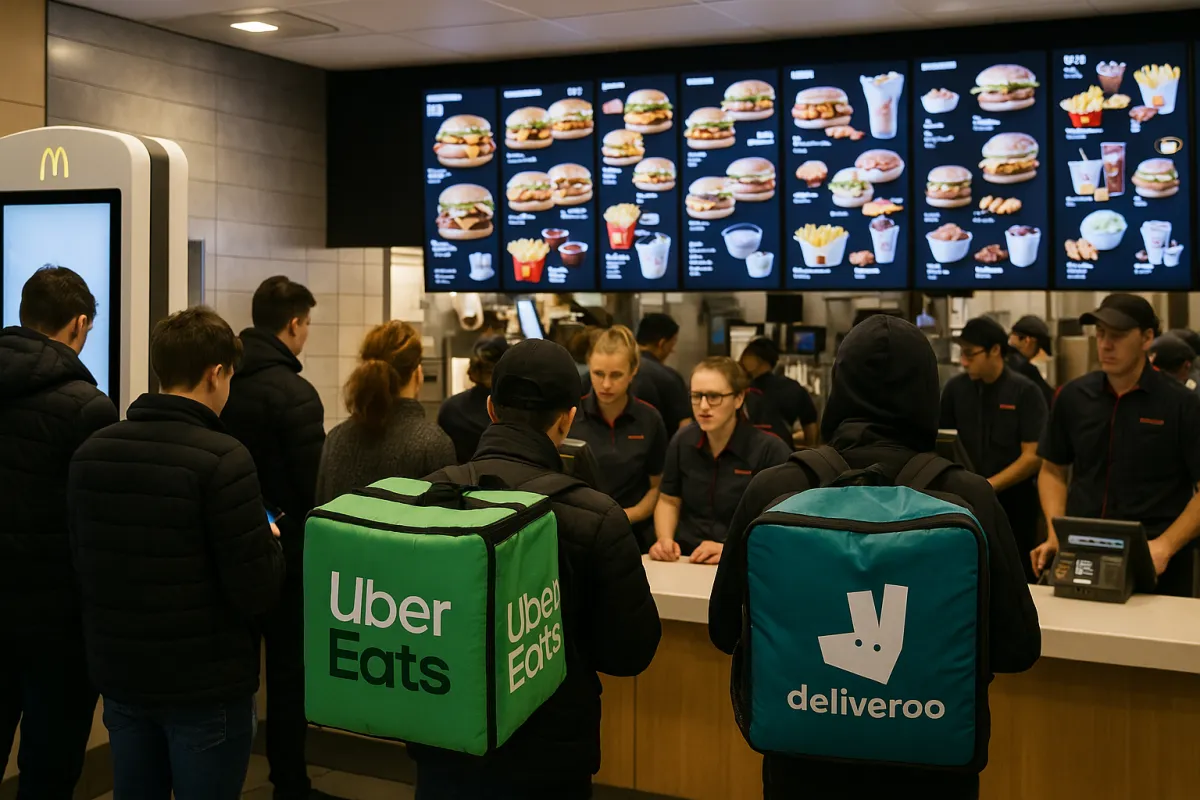
McDonald’s Isn’t Struggling Because of Consumer Cutbacks, It’s Because They Lost the Plot
Walk into a McDonald’s today and chances are you’ll experience one (or all) of the following:
A huge digital screen filled with an overwhelming number of menu options
Long queues despite the “fast” in fast food
Stressed-out staff juggling orders from Uber Eats, Deliveroo, the drive-thru, the app, and in-store customers
A disappointing meal that tastes rushed, inconsistent, or cold
Sound familiar?
McDonald’s is currently facing a significant drop in UK sales and many are blaming the cost of living crisis.
But I think that’s a surface-level explanation.
The deeper issue? McDonald’s has become a victim of its own menu bloat, operational chaos, and lost sense of purpose.
The Simplicity That Built a Global Empire
Let’s rewind to the 1948..
When Richard and Maurice McDonald opened their original restaurant, they served about ten items. That’s it. Burgers. Fries. Milkshakes. Sodas, Coffee, Milk
And because of that radical simplicity, they could serve a hot, tasty meal in under a minute and do it consistently, all day, every day.
Customers weren’t confused.
Staff weren’t overwhelmed.
The business model was beautifully boring and unbelievably efficient.
This wasn’t just good branding.
It was good operations.
And it laid the foundation for a global empire.
Fast Forward: The Monster Menu Problem
Now? McDonald’s UK menu runs well over 80 items when you factor in limited editions, breakfasts, drinks, sides, desserts, vegetarian options, and multiple sauces.
Each new item seems like a smart short-term marketing move:
“Add variety!”
“Tap into trends!”
“Drive new traffic!”
But in the long run, they’ve built a logistical nightmare:
More ingredients = more supply chain complexity
More menu items = slower training for new staff
More options = longer wait times for customers
That’s not innovation - that’s confusion.
The original McDonald’s system was designed around consistency, speed, and clarity. Today’s version seems to prioritise choice over quality and customers are noticing.
When Fast Food Isn’t Fast Anymore
The fundamental promise of fast food is in the name: fast.
But right now, McDonald’s is failing to deliver on that promise.
Queues move slowly, orders get backed up, and the sheer volume of channels (in-store, kiosk, app, delivery apps) makes things worse.
Delivery has added fuel to the fire. Staff now juggle:
In-person orders
Drive-thru customers
App pre-orders
Delivery platform orders (which can be 40–50% of sales in some stores)
Serve to table
Serve to your car
That’s not an efficient kitchen - that’s a war zone.
Overwhelmed Staff = Poor Experience
Let’s talk about the people behind the counter.
The average McDonald’s team member is dealing with:
High-pressure multitasking
Constant menu changes
Unpredictable peaks due to delivery surges
Little time to focus on customer service
So it’s no surprise we’re seeing rising reports of low morale, bullying, and even harassment.
When a business is set up to fail, people snap.
Culture erodes.
And it doesn’t just affect staff - it affects customers too.
Smiles disappear.
Orders are wrong.
Food comes out cold or messy.
Nobody wins.
This Isn’t a Cost-of-Living Problem
McDonald’s leadership has pointed fingers at economic conditions.
They say customers are tightening belts.
They say eating out is down.
But look closer and you’ll see:
Greggs is growing
Wetherspoons is holding steady
Why? Because they’re offering speed, value, and consistency - what McDonald’s used to be known for.
This isn’t a macroeconomic problem.
It’s a brand dilution problem.
They’ve lost clarity on what McDonald’s is actually for.
Complexity Kills Consistency
Complexity always looks good on paper.
It suggests innovation, creativity, responsiveness.
But in operations, complexity kills:
It kills speed
It kills team morale
It kills customer trust
And eventually, it kills sales
When customers stop trusting that they’ll get a quick, satisfying, low-hassle meal they go elsewhere.
Especially when they can get their food in half the time, for less, and with fewer headaches.
What McDonald’s Can Learn From The McDonald Brothers
The irony?
The answers are already in the company’s DNA.
Richard and Maurice McDonald didn’t invent the burger.
They just reengineered the system (and Ray Kroc took it to another level) that delivered it.
They were obsessed with:
Reducing friction
Limiting options
Training staff for excellence
Building consistency people could rely on
Today’s McDonald’s could use a dose of that original discipline.
Instead of launching the next chicken wrap or 9-sauce combo box, they should be asking:
What are the 10 core products we can make great again?
How do we make “fast food” feel fast again?
What systems and tools reduce stress for teams?
How can we make staff feel proud to serve?
Because no one gets excited about a Big Mac if it’s slow, soggy, or served by someone who clearly hates being there.
Final Thoughts
McDonald’s isn’t failing because people can’t afford a burger.
It’s failing because it stopped delivering on the very thing it was built for: a fast, consistent, affordable experience.
More options won’t fix that.
New promotions won’t fix that.
Adding another delivery platform definitely won’t fix that.
But simplifying the menu? Investing in people? Redesigning the kitchen for clarity and calm?
That might.
Until then, McDonald’s will keep spinning its wheels — and customers will keep quietly walking away.
And this is exactly the problem many micro food businesses face - we try to do too much and we end up not doing it very well.
My local Indian takeaway has 95 items on the menu.
It's taken me quite a lot of experimentation but I've found the 2 dishes they do really well and I stick to them.
In my next blog piece I'm looking at how choice is overwhelming middle class Britain and how it's affecting sales for many micro businesses especially in the food sector.
If yu want to receive these articles every week direct into your inbox then just fill in the form below and I'll send them to you every Monday